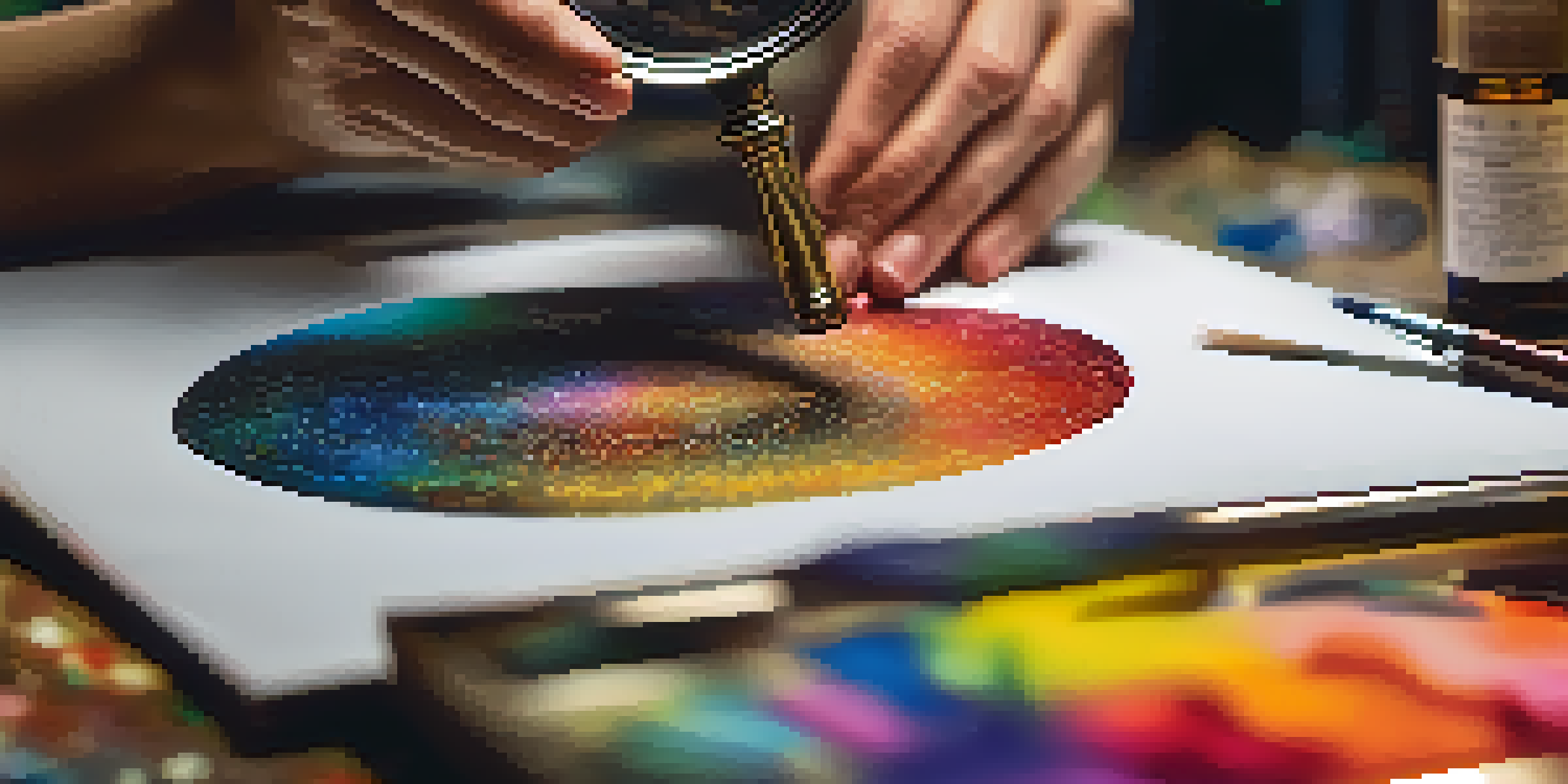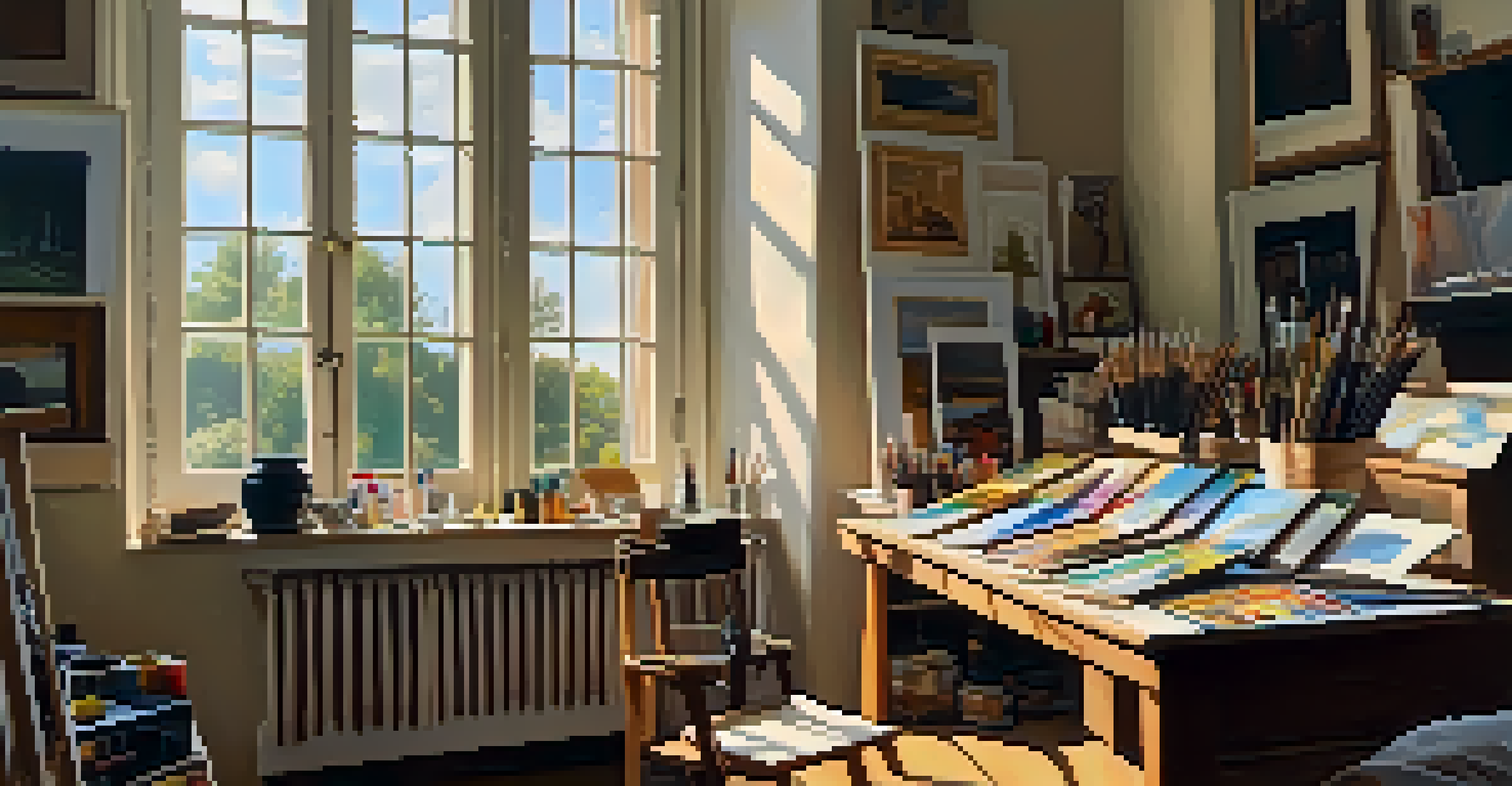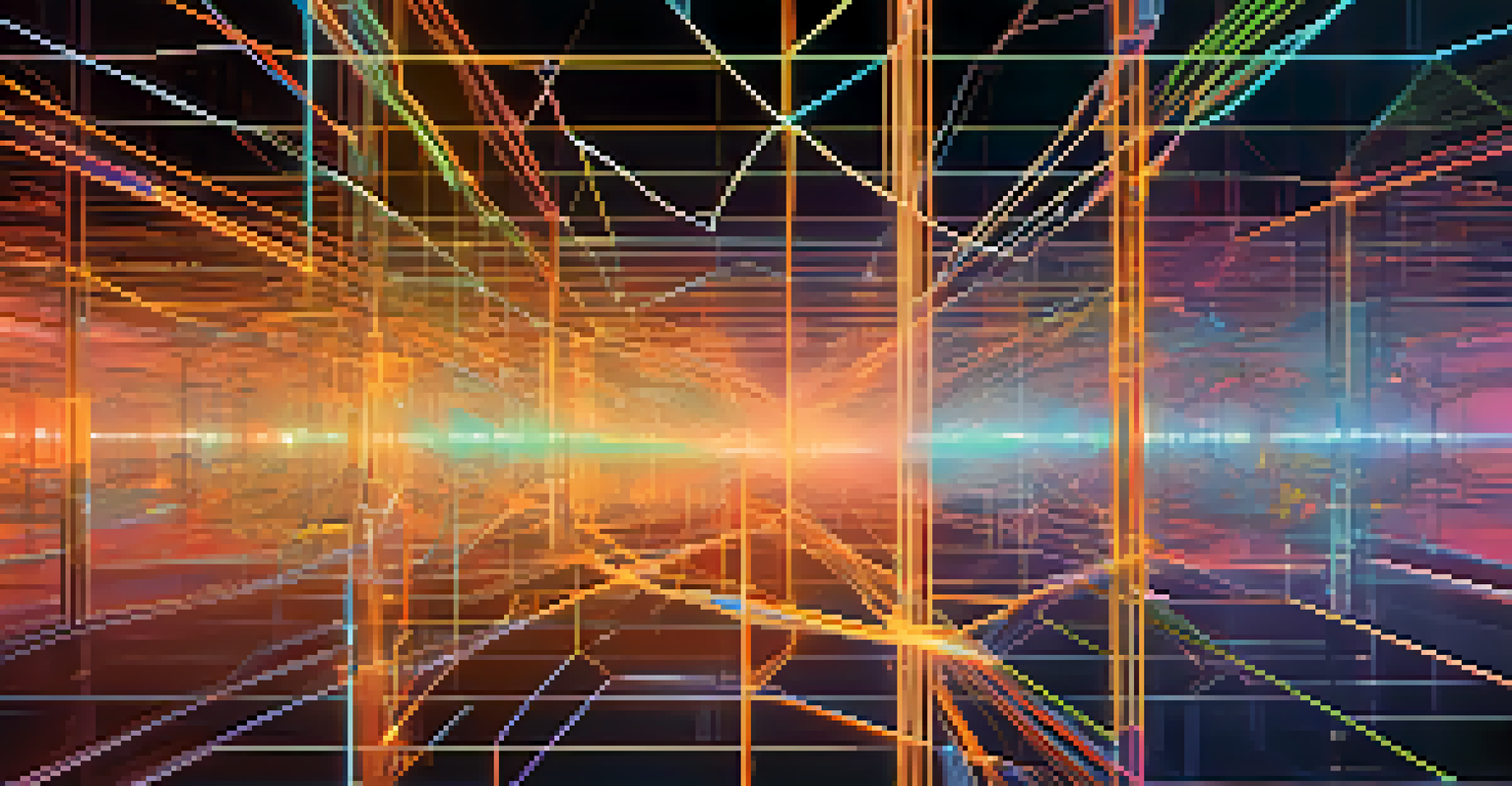Art Forgery: The Challenge to Authenticity in the Market

Understanding Art Forgery: A Brief Overview
Art forgery is the act of producing or selling works of art that are falsely attributed to someone else. This deceit can take many forms, from replicating famous paintings to creating entirely new pieces that mimic a particular artist's style. The allure of owning a piece attributed to a renowned artist often drives individuals to fall victim to these scams.
Art is the most beautiful of all lies.
The history of art forgery dates back centuries, with famous forgers like Han van Meegeren creating works that fooled both collectors and experts alike. Such forgeries can challenge our perceptions of value and authenticity in art, making it a compelling topic for both historians and art enthusiasts. As technology advances, the tools for both creating and detecting forgeries have evolved, adding another layer to this intricate dance.
So, why does art forgery matter? Beyond the financial implications, it raises profound questions about authenticity, the role of the artist, and the meaning of art itself. In a world where a signature can elevate a piece from mundane to priceless, the stakes of art forgery are incredibly high.
The Financial Impact of Art Forgery on Collectors
When collectors invest in art, they usually hope for both emotional satisfaction and financial gain. However, the presence of forgeries in the market can turn these investments into costly mistakes. A well-executed forgery can be indistinguishable from the original, leading collectors to unwittingly pay exorbitant prices for a fake.

For example, the infamous forger Wolfgang Beltracchi created forgeries that sold for millions before he was caught. His deception not only affected the value of the works he forged but also tainted the reputations of legitimate artists and galleries involved. Such scenarios remind collectors to approach purchases with caution and due diligence.
Art Forgery Challenges Authenticity
Art forgery raises essential questions about the value and authenticity of artworks, impacting collectors and the art market.
The financial fallout can extend beyond just the misled collectors; it impacts the entire art market, creating a ripple effect of distrust. As the authenticity of artworks comes under scrutiny, the overall value of genuine pieces can decline, leading to significant losses for many involved in the art trade.
Detecting Art Forgeries: Techniques and Challenges
Detecting forgeries is a complex process that requires a combination of expertise, technology, and sometimes a bit of luck. Art historians and forensic scientists often collaborate to examine works for inconsistencies in materials, technique, and style. Advanced techniques, such as infrared reflectography and X-ray fluorescence, can reveal hidden layers and materials that may indicate forgery.
The only thing worse than being fooled is not being fooled at all.
However, even with cutting-edge technology, detecting a well-crafted forgery can be a daunting task. Some forgers have mastered the techniques of their predecessors, creating pieces that fool even seasoned experts. This constant cat-and-mouse game between forgers and art detectives makes the field both challenging and fascinating.
Moreover, the emotional aspect of art complicates detection efforts. Art is subjective, and personal connections to pieces can cloud judgment, making it hard for collectors to accept that they may have been duped. This emotional investment can lead to denial, which is yet another barrier in the fight against art forgery.
Legal Implications of Art Forgery
The legal landscape surrounding art forgery is intricate, involving laws related to fraud, copyright, and ownership. When a forgery is uncovered, the legal ramifications can be extensive for both the seller and the buyer. Depending on the situation, criminal charges may be pressed, leading to potential jail time for the forger.
Additionally, victims of art forgery may pursue civil lawsuits to reclaim their losses, which can lead to lengthy and costly legal battles. The complexities of ownership and provenance can complicate these cases further, often requiring detailed documentation to prove authenticity and ownership history.
Financial Risks for Collectors
The presence of forgeries can turn art investments into costly mistakes, affecting not just individual collectors but also the broader art market.
This legal aspect underscores the importance of proper due diligence when purchasing art. Collectors should seek legal advice and ensure that every piece they buy comes with verifiable documentation to protect themselves from potential fraud.
Famous Art Forgeries That Shook the Market
Art history is peppered with infamous forgeries that have made headlines and left a lasting impact on the market. One notable example is the case of the 'Monuments Men,' who confronted art theft and forgery during World War II. Their efforts revealed the extent of forgery that had infiltrated the art world, showcasing the vulnerability of even the most revered works.
Another striking case involves the forgeries of John Myatt, who created fake works attributed to various famous artists, including Monet and Van Gogh. His story is a captivating tale of deception that highlights how even the most prestigious institutions can be misled. Such cases not only challenge perceptions of authenticity but also serve as cautionary tales for collectors.
These high-profile forgeries have prompted the art world to adopt stricter measures for authentication and provenance verification. The fallout from these cases serves as a reminder that the art market is not immune to deception, and even the most celebrated pieces may not be what they seem.
The Role of Technology in Combatting Art Forgery
Technology has become a powerful ally in the fight against art forgery. From advanced imaging techniques to blockchain technology, the tools available to authenticate artworks have significantly improved. For instance, blockchain offers a transparent way to track the provenance of artworks, making it more challenging for forgers to sell their fake pieces undetected.
Moreover, artificial intelligence is playing an increasingly important role in analyzing artworks. Algorithms can compare pieces to a vast database of known works, spotting anomalies that may indicate forgery. This technology not only aids experts but also empowers collectors to make informed decisions.
Technology Aids Forgery Detection
Advancements in technology, such as AI and blockchain, enhance efforts to combat art forgery, though forgers are also adapting to these tools.
However, while technology offers promising solutions, it is not foolproof. Forgers are also adapting, using technology to create more convincing fakes. This ongoing battle between innovation and deception illustrates the dynamic nature of the art world and the constant need for vigilance.
Protecting Yourself in the Art Market
Navigating the art market can be a thrilling yet daunting experience, especially with the lurking threat of forgery. So, how can collectors protect themselves? The key lies in conducting thorough research and seeking expert advice before making any purchases. Knowledge is a powerful tool in identifying potential red flags.
Additionally, working with reputable galleries or art dealers can provide an extra layer of security. These professionals often have established relationships with artists and can offer assurances regarding the authenticity of their pieces. Look for galleries that provide detailed provenance documentation to support their claims.

Finally, consider investing in art insurance to safeguard against potential losses from forgery. While this won't prevent forgery, it can provide peace of mind knowing that you're protected financially if you do fall victim to art fraud.